EAST COAST MAGAZINE
Scroll Down for Issue 33
Subscribe for updates
a submission-based Magazine
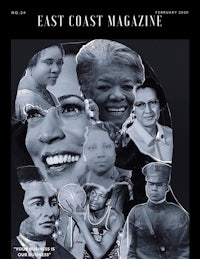
Black History to Black excellence
By: Lee Jones
For as long as I can remember, Black History Month has been a way for us to honor and remember the rocky path our predecessors traveled to get us to where we are now.
Black history is a constant reminder to be a better person.
I strive to be as great — or greater — than those who came before me. If you look at all the things that Africans Americans accomplished over the span of 200 years, anyone could see the magnitude of these feats.
The historical change of events that resonates with me the most is the Civil Rights Movement — which started in 1956 and ended in 1968 — was led by the legendary Dr. Martin Luther King Jr. He was a great man who was well respected and admired by all.
What I admire most about him was no matter how bad things got, he always stayed true to his beliefs of non-violence.
I'm sure no one today could blame him if he did go the opposite route. He was one of the few people who truly understood that there is power in numbers and felt violence will not accomplish anything.
People during the civil rights movement endured many obstacles. They were sprayed by fire engine hoses, crosses were burned on their properties and they were attacked by police dogs. Still, Dr. King and his followers stayed true to his views of non violence.
Along with King, there are some great African Americans we should know such as Harriet Tubman, Rosa Parks, Malcolm X and James Baldwin. These great individuals fought hard to carve a path to where we are today. They leave us with the example of what Black excellence looks like.
Different Black people throughout history have fought for our right to vote, our civil rights and equality. These are a few given to us by those who came before us. So, Black History Month is a reminder to us that we can accomplish anything if we do it the right way and endure whatever problems come our way and keep pushing until we change history for the better.
Black history is Black excellence.
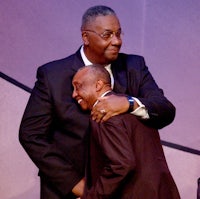
Big John & Little John: Remembering our fallen legends
By Jerry Humphrey III
The basketball family recently mourned the loss of fallen Hall of Fame coach John Chaney. Chaney coached Temple University for 24 seasons (1982-2006) and led them to 17 NCAA tournament appearances.
In the fall of last year, we also lost John Thompson: legendary coach for Georgetown University. Thompson was the first African American coach to win an NCAA title in the sport of basketball in 1984 and coached the Hoyas for 27 years.
As we celebrate Black History Month, it’s important to know that these men used their platform to bring awareness to what's going on in the world and were not afraid of being unapologetically black.
In 1989, the NCAA legislation introduced Proposition 42 (Now known as Proposition 48): an NCAA regulation that stipulates minimum high school grades and standardized test scores that student-athletes must meet to participate in college athletic competition. This affected Black athletes significantly at the time, especially the ones who partially qualified for eligibility.
Coach Thompson was not fond of the rule at all and decided to boycott their following game against Big East rival Boston College.
Chaney was also very vocal on the rule and in an interview with Sports Illustrated he noted:
"You tellin' me the NCAA can decide who lives and who dies among Black folks? Education is food, it's heat, it's shelter! Who has the right to deprive anyone of that? I come from the earth! I know what I'm talkin' about! What choice are we givin' the kids who fail that SAT test? One choice! Back to the streets… to a slow-legged death.”
As a result of both coaches speaking up about this, the NCAA subsequently relented and did away with Proposition 42 for more equitable academic standards for freshmen.
Outside of teaching his players how to be better athletes, Thompson believed in grooming men and showing them how to be successful beyond the court. Over the years, he’s coached players like Patrick Ewing, Alonzo Mourning and Dikembe Mutombo.
Before becoming an MVP and basketball Hall of Famer, Allen Iverson was a talented high school prospect with minimum offers due to his troubles with the law. Thompson took a chance on a young Iverson and in his two seasons with the Hoyas, he turned AI into a No. 1 draft pick and arguably one of the greatest guards to ever play the game.
During Iverson’s Hall of fame speech, he paid tribute to his college coach and the two shared a sentimental embrace at the podium.
"I'd like to thank Coach Thompson for saving my life,” Iverson said. “For giving me the opportunity. I was recruited by every school in the country for football and basketball. The incident that happened in high school, all that was taken away. No other teams. No other schools were recruiting me anymore. My mom went to Georgetown and begged him to give me a chance. And he did."
When the news broke about Coach Chaneys death, the Philadelphia community showed tremendous love.
Villanova Men’s Basketball Coach Jay Wright wrote to Twitter:
“A true Philadelphia jewel. Coach Chaney is respected nationally more than we know in Philly. An inspiration to players and coaches in the b-ball world. A great competitor and a great friend. RIP Coach! NovaNation sends out prayers and condolences to the Chaney family.”
Losing both of these pioneers in a five-month span hurts because in a time where sports needed a Black voice to advocate for our athletes they were there.
Big John and Little John paved the way for the Juwan Howards, Lovelle Motons, Shaka Smarts and many more African American coaches in college basketball.
Their legacy shall live on forever
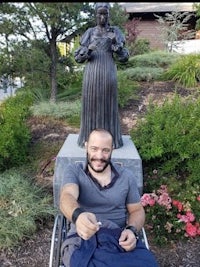
Don’t dis my abilities: Falling in love while being disabled
By: Micheal Hummel
Claudia Pascoal was born in Kimberley, a city in South Africa.
She has Mucopolysaccharidosis (MPS), a very rare disease that only a small number of people in South Africa have. In addition to MPS, she also has a Motor disability in her left leg, hepatomegaly, and relative macrocephaly, abnormal neuroimaging.]
Pascoal, in her twenties, is feeling the heartache of wanting a relationship while disabled.
“I’ve always felt alone in a way, I’m single and I’ve never been kissed,” Pascoal said. “But I know that God has his hands on my body and will send me the man that I need that will love me for me and won’t pressure me or change me into someone I’m not.
When she started school, she couldn't keep up with her friends. They didn't understand her body or who she was.
The teachers recommended to her parents for her to be taken to a doctor, and that is how her disability was discovered. She now stays at home all day, and it has taken a toll on her.
“I stay home 24/7, and I get so moody,” she said. “I don’t know what to do when I feel like nothing. I knit barbie clothes and things, but that doesn’t really help me. I must put hope in that the woman I go to who is a kinesiologist will work God's hands into her working with the problems in my body and take them away.
A recent blog post on www.easterseals.com told stories about love and disability, as well as the trials and tribulations that go along with it. “Does it seem more difficult to find love if you have a disability?
Many of our interviewees said that, at first yes. But they all agreed that once people talk and get past questions or concerns, love is love: sometimes it’s messy but mostly it’s marvelous.
When I started being interested in girls, it was the first time I remember having self confidence issues.
Being in a wheelchair, my default position was, “no girl will like me because I use a wheelchair.” These are words I heard in my head well into my late twenties and again for a time in my thirties.
The worst part about this was knowing it was wrong and not having the emotional intelligence to do anything about it. It was the early 90s when the mindset of people were different, people were more ignorant to the differences of the disabled population and the Americans with Disabilities Act had not yet been introduced.
I never thought a woman would want to get to know me enough to want a relationship with me. Furthermore, if I did enter into a relationship, I never thought it would go anywhere due to the physical expectations placed on relationships that go any length of time.
I’m reminded of a quote from “The Holiday,” one of my favorite movies of all time: “Sex makes everything complicated. Even when you don't have it, not having it makes things complicated.”
No matter who you are — man or woman — sooner or later in a relationship, you expect it’s going to progress toward sex, and if your partner believes you can’t perform the relationship, it is all but dead before it begins.
Moving from Long Island, N.Y. to Las Vegas was a culture shock that seemed to include a free brothel of women in bars, strip clubs and way too much alcohol.
After five years, self-esteem became a foreign language.
Settling for a woman who was verbally, emotionally and psychologically abusive broke down a man into a boy who wanted desperately to be rebuilt — even if he didn’t know it.
Spending years alone figuring myself out, I got closer to who I was supposed to be.
When I met my wife, I was still more broken than I care to admit. I had been working on myself, but I still didn’t have the emotional prowess to improve my life. It took a good year and a half to feel like I had moved forward in my journey.
I was in a Marie Callender’s, a national restaurant franchise, when I fell in love with my wife for a second time. We had an argument that was one of the worst we had ever had. We had barely spoken for days and, per usual, when it was over, we were better than we were when it started.
I looked into her eyes before we were to eat.
My eyes welled up.
A lump grew in my throat.
The air felt like it had all but left my body and an overwhelming feeling of home and comfort took me over. It was the only time I had a physiological visceral reaction toward love and connection.
When it came time to propose, I wasn’t nervous at all. I knew what I wanted and why I wanted it.
I knew where I belonged: With her.
I took her for an overnight trip to Cedar City, Utah where we had regularly visited. The first picture I sent to her was one I took of a statue of Juliet. I always thought in the back of my mind that if I were to ever propose, in front of that statue would be the perfect place. I called her father to ask for his permission. After being given his permission, we spent the day at one of our favorite places in the city. We had closed the place down and were on our way back to the hotel when my anxiety kicked in. I wanted to propose that night and it was already late. I drove her to the square where the statue was.
By the time we reached our destination it was pitch black with the exception of lights in the ground pointing up at the statues and greenery making it even more romantic. Feeling the nerves inside, my words came out high pitched and cracked. Fumbling with the box, hesitation about what was going on had filled the chilled night air.
When she said yes two souls became even closer as one.
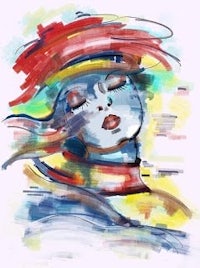
Fashion Tea with Tehanna: Fashion in 2021
By: Tehanna Griffin
Let’s for a moment imagine the day we are 100 percent safe of this toxic Virus. We are stepping out of our homes for the first time, knowing that we have freedom now to just “BE”.
The first thing that might go through your head is, “Thank God!”, or something of that nature. The next thing you might think is, “Everyone is coming outside, what do I wear?”, or even, “Where do I go? What do I do? Who do I see?”
The truth is, we all know you are going to panic about what to wear because pajamas and sweats will not cut it anymore!
People you haven't seen in months will finally see you for the first time in a long time. Maybe you have some extra pounds, wild hair and undone nails. Or maybe you have spent almost a year taking care of yourself during isolation (kudos to you, I haven't!).
Maybe you got Isolation depression and threw away all your clothes or sold everything in your closet for that extra money. Just maybe you spent months shopping to keep yourself happy.
Your mind might start reeling in that final moment, standing outside, taking a deep breath. What if you are not quite sure where to start? Well thank goodness you are reading this, because there is indeed a fashion trend for 2021. So when you finally get to ask yourself “What do I wear out today?” what you put on next will indeed be in fashion.
Loud Prints and Colors: For so long we have been stuck in the doom and gloom of 2020. If it wasn't COVID-19 or racial injustice, it was the election. Needless to say, 2021 is not asking for the old sadness and basic sad colors.
The year 2021 is LOUD!!!
We are finally free to be us, be bold and be expressive.
There will be bold prints to catch the eye, vibrant colors and beautiful statement pieces. When you step out in public you are no longer the person sitting at home hurting, but the confident eye candy we all wish we could be. If there was any time to wear something so bold that you might think you would get rejected... 2021 is it!
We (the whole world), just went through something together... so don't be afraid to express yourself!
Bold and Sexy Comfort: After months of isolation from big crowds and all the people we love, we definitely will be bold.
There is no doubt we probably want to put on our bold and best, but what will be “in?”
There will be oversized, nice crisp edges and long flowing lengthy dresses and pants. Although we want to be bold and sexy, we will also keep a hint of that comfort we got used to: Things that can easily be styled up and styled down; clothes that feel good, keep us comfortable in our body; something functioning enough to wear casually, but then quickly accessorize for an outing.
Promiscuous Innocence: The truth is, we will be just coming back into the eye of the public again. Our boldness will be seen, but our sexiness will be subtle.
Some people might feel highly self-conscious, and some might feel low-confidence due to isolation from others. Some might even be feeling great but nervous about getting back out there and of course thinking about what society might be thinking.
Either way, we may see promiscuous innocence! Everyone wants to get back out there in public — and maybe even the dating scene — but we may be more innocent than we think.
Instead of our bold sex appeal trends in the fashion industry, we might just do a little shoulder here and a little midriff over there. Our intention might be sexy and wild, but our appearance might just have a little more sexy mystery than last year.
So guys, if you find yourself questioning what the heck you need to wear out in public, again be bold, vibrant, and moderately mysteriously sexy.
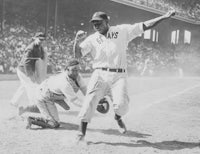
The Era of the unknown
By Chris Samuel
In the history of Major League Baseball, plenty of pioneers have changed the game or have left a significant mark on the game.
A group that could have changed the entire landscape were notable Black legends that never received their proper shine on the diamond.
For several decades, professional Black baseball players played in the Negro Leagues due the segregation laws in the early 20th century. The talent of these men were as great — or some could argue greater — than the talent in the MLB, which at the time was all White.
At the time, talent was based on race. White fans believed the players in the MLB were better by default, and Black fans felt as the Negro League players were the superior.
In 1947, the color barrier was broken by Jackie Robinson, who had his debut with the Brooklyn Dodgers. Robinson endured racism, jeers and constant taunting while he played in the MLB. He would go on to win a World Series title in 1955 and retire with a .311 batting average. To this day, Robinson has had a tremendous impact on the sport. His number, 42, has been retired on teams around the league.
Other players who played with and before Robinson in the Negro Leagues had the possiblity to be MLB legends and added a spark to the imagination.
Leroy “Satchel” Paige was one of the most dominant players in the Negro Leagues, and also one of the biggest characters. Paige was known in the league as an intimidating pitcher due to the speed and pure skill. In his tenure with the Negro Leagues, Paige had 146 wins with nearly a dozen teams.
In the Major leagues, Paige made his debut at age 42. He shined for the Cleveland Indians in 1948, going 6-1 with a 2.48 ERA and a World Series title. Paige finished with 174 total wins in both leagues, which could have made him one of the best pitchers in the game statistically — if he was given a fair opportunity.
When it comes to power hitters, one for the books included slugger Josh Gibson. In his 16-year career, Gibson hit 238 home runs and was one of the Negro Leagues most feared batters at the time. Gibson’s career mostly spanned with the Pittsburgh Crawfords and Homestead Grays, but never had a MLB debut due to his death in 1946 — one year before Robinson made his debut.
In December of 2020, the MLB announced that Negro League stats will be included in the record books. Gibson’s Negro League batting average was translated to the MLB, Gibson would have had the second highest batting average of all time at .359. The only player in history with a higher batting average is Ty Cobb at .367. Along with being a great baseball player, Cobb shared anything but positive thoughts on Black players.
In an effort to erase negative figures like Cobb, the Baseball Writers Association of America (BBWAA) voted to remove J.G. Taylor Spink’s name from their Career Excellence Award. Spink was the former publisher of The Sporting News from 1914 until his death in 1962. Spink would usually write deragatory and racist remarks about Black players in the Negro Leagues for decades and was completley against the league integrating. The BBWAA concluded that the award will be simply called the Career Excellence Award.
Negro League players put up incredible numbers and left inpmactful legacies just like White players in the MLB.
Black players — prior to Robinson’s breaking of the color barrier — could have made a significant mark on the sport of baseball. Integrating the MLB was considered a bad or unpopular idea, but produced more Black stars as the years went by. More Black legends and Hall of Famers could have been produced in the decades prior to 1947, but imagining is all that fans can do.
While there are many Black names that will not go down in history — even though they should — one thing that we can always do is honor the greats and appreciate their efforts to the game.
Magic of the Heart
By Onyekwere Prince Adiele
Hey!
Is it really good to feel the magic of the heart?
Oh Yeah...
I could remember when I trapped her with words.
Her heart started singing
Song my heart with melody of happiness;
She trapped my soul with her touch
Ever so soft that smells like a rose.
She turned my pain into purpose with a glanc;
She made all things come together like magic
Never did I have to think about where she stands
Oh! she won
Something that only a woman of a pure heart could.
Such a need I didn't realize I needed
Vulnerable to her glance
Sensitive to her touch
Drained by her thoughts
What else could I have wanted?
The feeling I never felt
Hopeless romance that I never believe it’s real
But she trapped me in a glass
Filled with laughter
Happiness
Joy
Fulfilled
Assurance
Love
Then in no time I drowned in every glance
And then I know true feeling
I feel the magic of the heart (LOVE).
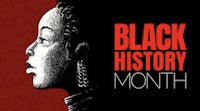
Black Women in HERstory
By: Shacquane’ Byrd
What a Time to Be ALIVE!
Ever since I was a little girl, I watched the media announce, “The first Black man/woman to (insert accomplishment here).” There have been so many firsts to happen in my life, I find it hard to be alive and not be inspired by all those around me.
About 55 years ago, we dealt with segregation and the Civil Rights Movement. We have come a long way since those days. Although Dr. King and Malcom X were the most publicized faces during that time, we often forget about their wives that supported them to pursue “the dream.”
Yes, the wives.
The helpmate. The backbones. The front-line responders. The women who balanced home life with civil rights.
So many times we overlook the women behind — or better yet next to — in celebrating Black History Month. The GodFather of Soul James Brown said it best: “It’s a man’s world but it can be nothing without a woman or a girl.”Let us take some time to explore some women who are Black HERstory.
Coretta Scott King
“Women, in general, are not part of the corruption of the past, so they can give a new kind of leadership, a new image for mankind.”
When we think of Dr. King, we often neglect to mention or honor his wife Coretta Scott King. Not only was she a devoted wife and loving mother, she was a civil rights activist too.In many pictures on Google, she is marching right alongside Dr. King.
There are not many pictures without her being by his side. She openly criticized the movement’s exclusion of women.
She also started the foundation in honor of her husband’s legacy. Following her husband's governmental assassination in 1968, Coretta founded the Martin Luther King Jr. Center for Nonviolent Social Change, and later successfully lobbied for his birthday to be recognized as a federal holiday in 1983.
After her husband’s death, she continued to support several issues that Dr. King supported.
Coretta marched in a labor strike only days after his funeral. She openly expressed disdain for the Vietnam War, an action that placed her under FBI surveillance for several years. She supported several women’s right causes.
She travelled internationally, lecturing about racism and economic issues in the United States and abroad. In 1969, King was awarded the Universal Love Award, becoming the first non-Italian to hold the distinction. The same year, she published her memoirs entitled My Life with Martin Luther King Jr. Sometime after starting the formation of what became the Martin Luther King Jr. National Historic Site — in his birthplace Atlanta — she dedicated the new King Center Complex on its grounds in 1981.
Coretta Scott King was a true ride or die woman.
She spoke her mind with class and intelligence. She is now laid to rest with her husband in Atlanta, Georgia and her children now operate the foundation and the King estate.
Coretta Scott King is Black Herstory.
Betty Shabazz
“I wish you power that equals your intelligence and your strength. I wish you success that equals your talent and determination. And I wish you faith.”
We know even less about this fearless woman since her husband was not highly as favored in the media.
Malcom X may be known as being the radical side of the Civil Rights Movement, but, nonetheless, he had great ideas for unity among Black people.
His wife, Betty Shabazz, was also a loving wife and devoted mother. She too was a civil rights activist in her own right. She was often by X’s side but less on the front lines due to their Islamic beliefs. She was there when her husband was killed along with 3 of their children.
I can not imagine the strength it took to overcome that loss.
After her husband was assassinated in 1965, she became a registered nurse. She decided to continue her education while supporting her six children and received a Ph.D. in education administration and served as a professor. Later, she became the Director of the Department of Communications and Public Relations at Medgar Evers College.
Early on in her life, she felt unwanted by her biological mother.
Remembering how tough it was to be raised by a single young mother, she created a program called the Young Mothers Educational Development (YMED), which educates young, unwed women and makes sure that they are self-sufficient once they deliver their children. They also provided a daycare center so mothers could complete their education.
Shabazz lectured as a civil rights activist and fought for racial tolerance until she died.
Betty Shabazz is Black HERstory.
Maya Angelou
“A Woman in harmony with her spirit is like a river flowing. She goes where she will without pretense and arrives at her destination prepared to be herself and only herself”
Maya Angelou is a name that should always be mentioned during Black History Month.
She is the first Black female poet I can remember hearing or reading about growing up in the 1990s. Maya Angelou was a memoirist, historian, songwriter, playwright, dancer, stage and screen producer, first black female director, performer, singer and civil rights activist. She published seven autobiographies, three books of essays, several books of poetry, and is credited with a list of plays, movies and television shows spanning over 50 years. She received dozens of awards and more than 50 honorary degrees from various universities.
In the late 1950s, Angelou joined the Harlem Writer’s Guild.
With the help of her friend, novelist James Baldwin, she began work on her most famous book I Know Why the Caged Bird Sings. Published in 1970, the book received international acclaim and made the bestseller list.
The book was also banned in many schools during that time.
Angelou’s honesty about being sexually abused sparked controversy because it was a taboo subject. Later, I Know Why the Caged Bird Sings would become a course adoption at college campuses around the world. With more than 30 bestselling titles, Maya Angelou wrote a total of 36 books.
As far as her civil activism career, she is well established. Her talents took her many places.
In 1959, at the request of Dr. Martin Luther King Jr., Angelou became the northern coordinator for the Southern Christian Leadership Conference. From 1961-1962 she was associate editor of The Arab Observer in Cairo, Egypt, the only English-language news weekly in the Middle East; from 1964 to 1966 she was the feature editor of the African Review in Accra, Ghana.
She returned to the United States in 1974 and was appointed by Gerald Ford to the Bicentennial Commission, and later by President Jimmy Carter to the Commission for International Woman of the Year. In 1993, Angelou wrote and delivered a poem, "On The Pulse of the Morning," at the inauguration for President Bill Clinton at his request. In 2000, she received the National Medal of Arts, and in 2010 she was awarded the Presidential Medal of Freedom by President Barack Obama.
Even in her death, she continues to be an inspiration for women, writers and poets. She is proof of allowing your talents to open doors for you — a prime example of why women should be celebrated Black History Month.
We are the ones who bring the people together. Our voices are strong, yet soft enough to make the highest man in office listen and take heed.
Maya Angelou is Black HERstory.
Kamala Harris
“I've been a proud mentor to many women seeking public office, because I believe we need more women at all levels of government. Women have an equal stake in our future and should have an equal voice in our politics. These are challenging times, but I believe getting more women to run for office is a big part of the solution.”
Many Black women, including the previous ones I’ve mentioned, paved the way for this particular woman to become the first Black Vice President of the United States of America.
Vice President Kamala Harris is of Black and Asian descent. She proudly boasts being a Black woman.
She is a graduate of the famous historical black college Howard University. So, the culture is claiming her as our forever Vice President — just like our forever President Barack Obama. This woman is the manifestation of being our ancestor’s wildest dreams. The Vice President Office has only been held by white males since 1776.
What a time to be alive.
We are living in history.
After attending Howard University and the University of California's Hastings College of the Law, Kamala Harris rose through the California legal system.
She became the state attorney general in 2010. In November of 2016, Harris became just the second African American woman and the first South Asian American to win a seat in the U.S. Senate. She announced her candidacy for the 2020 U.S. presidential election on Martin Luther King Jr. Day 2019. She dropped out of the race before the end of the year. In August 2020, Joe Biden announced Harris as vice presidential running mate and after a close race.
After DAYS of recounting votes and multiple lawsuits from 45’s camp, finally, Biden and Harris were elected in November 2020.
She also has some personal accomplishments.
She first became an author in 2009 with Smart on Crime: A Career Prosecutor's Plan to Make Us Safer, which explores her philosophy and ideas for criminal-justice reform. She published two books in early 2019. The Truths We Hold: An American Journey reflects on her personal relationships and upbringing, and Superheroes Are Everywhere, another memoir rendered in picture-book form for kids.
From the outside looking in Kamala seems down to earth. She has a close relationship with her family and gives back to HBCUs, attending homecoming and making speeches at various locations before being elected Vice President.
Harris is living and breathing Black History.
At President Joe Biden’s inauguration in January, she was sworn in on Thurgood Marshall’s Bible (Marshall was the first black supreme court judge in the U.S.).
The turnout was small due to COVID-19. Thousands of young girls and women watched proudly at home.
She is an example that women can be true leaders of superpower countries; that we have the emotional ability and mental ability to run this great nation. Every time she swears in a person into office, she is changing history. With every stroke of the pen as Vice President she takes Black history to the next level.
The bar is set higher for black women because of her accomplishments.
Kamala Harris is Black HERstory.
Shacquane’ Byrd
“If you want to Evolve in life, you must get Involved in every aspect of life.”
Throughout history, Black women have made thousands of contributions to America and the world.
From inventors, scientists, teachers, poets, novelists, civil right activists, pro athletes, star entertainers and award winning film directors, the list is never ending. I could have mentioned 20 more women who have changed the world. Anything you can think of, Black women have succeeded in — oftentimes unnoticed and unrecognized, yet, still, they push forward.
Many times, we realize we are making waves and breaking barriers for the next generation to come: While making history today, we transform the future for Black girls and boys everywhere. Because of these women, we can continue to stand firm in the belief that times are changing, and the future is truly female.
Remember as you honor the men who changed history, do not forget the women who stood by their sides. Remember the ones who changed it alone and made history.
To every woman reading this, the more contributions you make and the more you succeed, the more doors you leave open for the next generations. As women, let us continue to lead our people to equality.
Happy Black HERstory Month.
References:
www.womenshistory.org/education-resources/biographies/coretta-scott-king
www.shondaland.com/inspire/books/a20634639/the-revolutionary-love-of-betty-shabazz/
www.biography.com/political-figure/kamala-harris
www.mayaangelou.com
Race, sex or do we just suck?: Understanding domestic violence within sports… or at least trying to
By Jordyn J. Bennett
Since its release, I have become obsessed with exploring the patriarchy of intimate male-female relationships, after watching the Netflix original film Malcolm & Marie.
The beautifully shot, black and white production starring John David Washington and Zendaya is a tale that delves into toxic gender characteristics, abusive relationships and an examination of societal race and gender hindrances.
I hear you, “What does a movie about love have anything to do with sports?”
Everything.
On Jan. 23, Kent, Wash. Police Department responded to a domestic violence disturbance that would soon be discovered to be a gruesome and horrific near-murder executed by former Seattle Seahawks offensive tackle Chad Wheeler.
According to the police reports, Breonna Taylor — the victim and Wheeler’s ex-girlfriend — was forcefully grabbed and thrown on the bed after not obeying Wheeler’s command to bow to him, and was then strangled by the 300-pound plus, 6’7” pro athlete until she went unconscious. When she awoke, it was reported Wheeler said to her: “Wow, you’re alive?”
Pictures of Taylor’s battered and swollen face would surface, followed by a heartfelt apology from Wheeler, blaming the incident on a manic episode and announcing his leaving of football to go seek help.
I’m sure you heard about it… or maybe you didn’t. It barely received any coverage.
An early release from his contract with Seahawks that was ending soon anyway, a $400,000 bond that got Wheeler released from jail in three days that was accompanied by a not-guilty plea and a failure to mention the incident by the league at the “State of the League” press conference a few days before the Super Bowl.
But hey, Tom Brady got his seventh ring, right?
There is so much to digest when trying to decipher everything that is wrong and hypocritical about the action that took place and the reaction that followed.
Domestic abuse is no stranger to the NFL. Even prior to OJ Simpson, the dominating egos of men playing the sport of football (or any sport in general) have taken over the locker rooms from the peewee level to pro Hall of Fame inductees.
Domestic violence is such a recurring happening in the game of football that in 2019, AP News wrote an article that listed some of the league’s most notable cases as it celebrated its 100th year — a list that included Pittsburgh Steelers quarterback Ben Rothlisburger and Dallas Cowboys running back Ezekial Elliot —and a catalog of 80 then current and former NFL players in the 21st century, who combined for 94 domestic violence cases, produced by clickitticket.com in March of 2019.
Unfortunately, the best way I can describe it is: the norm.
What’s to blame? Frankly, you can’t point to one thing. There has clearly been a precedent set of how much we value athletes, idolizing them for their efforts to bring our city a championship that only holds clout until the next season begins. We cook up the egos and the athletes feed into it, so it’s no wonder that many of these athletes fall into the trap of feeling untouchable.
It could be the conditioning provided by the overwhelming jock culture that lingers from the field to high school hallways, university dormitories and bedrooms. A mixture of machismo, homophobia and sexual conquest parades around the essence of wherever football is even talked about. The aura of “true manliness” instituted amongst the fraternity of pigskin patrons doesn’t just stay between the lines — it follows these athletes home.
And as much as I believe that Wheeler’s apology is not even a miniscule of the things that should be done to show true remorse, there is a very considerable argument to be made about his mention of a “manic episode.”
What comes with the overbearing masculinity of this game is a long history of suppressing feelings and not addressing mental health issues due to the label of being “soft.” What we have learned over the years from the lives of former NFL players Junior Seau and Aaron Hernandez, both CTE and mental health issues are real and dangerous when it comes to the lives of these human beings who have been slamming their heads against one another’s for decades.
Any one of those things, if not all of them, can be the reason as to why domestic violence is so prevalent in football. But when it comes to the response of the football community, one thing is for certain: IT WOULD NOT BE THE SAME IF THE PLAYER WAS BLACK.
Wheeler is white. And while an article popped up over here and Stephen A. Smith and Max Kellerman talked about it a little bit on ESPN’s First Take over there, it’s almost as if this thing never happened.
I can hear you out there: “Here you go pulling the Black card again.”
You’re damn right I am.
Former Baltimore Ravens running back Ray Rice became the league’s face of domestic violence and was exiled from the league; Detroit Lions running back Adrian Peterson, a future Hall of Famer and someone who deserves to be in the conversation for greatest running back of all time, had to go through hell and highwater to find his way back to a roster following his encounter with domestic abuse; Cleveland Browns running back Kareem Hunt and Kansas City Chiefs wide receiver Tyreek Hill made their ways back to the league following their incidents — in very impactful ways, I must add — but only after their stories were revisited repeatedly by television networks, radio stations and podcasts.
These individuals certainly deserve repercussions — that’s not my point and it’s without a doubt inarguable. But it is disheartening (but not surprising) that Wheeler’s story is passing by in the breeze, and becomes a part of the argument of how unfairly Black people are treated and penalized in comparison of their fellow countrymen of a different race, when this should be nothing more than a fight for the protection of women in a nation driven by a diminishing male-empowered machine. Not to mention, it is a Black woman who was harmed, continuing the saga of the neglecting Black women in society, headlined by names like Sandra Bland and Breona Taylor.
It shouldn’t be that… but it is.
So, what was I talking about earlier?
… Oh, yeah! So, Malcolm & Marie.
Glimpses of every aspect of race and the male-female dynamic I dipped my toe into regarding domestic violence within sports can be seen in the near two-hour dialogue between Washington and Zendaya. Washington’s character, a filmmaker named Malcolm, shows the ego and sense of superiority instilled in a man who lives in a world of entertainment and celebrity, where his success has earned him praise and accreditation after years of hard work. His role in the relationship, as what he demonstrates to be control, not only visits his narcissism, but his random outbursts and inability to not say the worst in times of conflict and controversy, shows glimpses of mania and dwindling psychological neglect.
Don’t get it twisted, Zendaya’s character certainly has her ticks, but we’re focusing on the male paradigm at the moment.
In some near-perfect way, I related a lot to Malcolm as a character — I believe we’re all meant to see little pieces of ourselves in some form. My favorite scene in the movie is when he is reading his article review from a white, female journalist working for the L.A. Times. His sporadic irrationality when he couldn’t find his phone, the disappreciation and criticism of a good review and the ability to tire yourself out from being so worked up was like looking at myself in the mirror.
Though it was Washington’s actions that made me see myself in the character, it was his problems with the article review that showed me the world.
We currently live in a world of, “Are you the right person to tell this story?” Malcolm expressed his disdain from the approval of the “woke” white woman, recognizing that his film — a story of a woman battling addiction and everyday life struggles — would’ve been questioned in a normal situation regarding how a woman is telling a man’s story; however, in this instance, because Malcolm is Black, he is given a pass. Instead of being berated with questions about his inspiration, he gets praised for his depiction and risk taking.
But should there ever be a question of who is telling the story so long as the message is pure?
In the sense of the domestic violence issue, should there ever be a reason why a white man’s case is ever less public than a Black man’s? Or if the harm done to an African American woman should be any less important than that of a European American woman’s?
The concepts of the fictitious world in Malcolm & Marie and the reality created from our favorite superstars on the gridiron go hand-in-hand. In both instances, there are factors that makes the situation different due to the stigmas placed in society by race, sex and power.
The color of one’s skin shouldn’t make a heinous act more or less talked about; one’s biological sex shouldn’t determine if they can or can’t address an issue.
The big picture in this is that there is a problem: domestic violence is a plague that infects the game of football.
And no matter who was involved, nothing should stop the problem for being addressed the way it should.
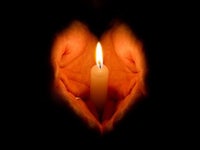
Waiting
By: Julie Richards-Humel
I keep waiting,
For the phone to ring,
For the text to come.
I keep waiting,
For someone to tell me it is not real,
For anyone to tell me something different.
I keep waiting,
For the news to set in,
For it to register,
For my heart to break,
Waiting,
Used to mean a prize was coming;
That someone was coming to visit.
Waiting,
To hear the voice of someone you love,
To see a rainbow on a rainy day;
In line for the newest film.
For now, I’ll be waiting,
To see your face in the clouds,
Hear your favorite songs to play,
To hear your laugh;
To know you’re standing beside us.
Until then, I just keep waiting.

Chef Shida’s
Recipe of the Month
Southern Greens
Ready in 1 -1 ½ hour
Serves 8 people
Collard Greens and Kale have been around for centuries. What most African Americans eat is called “Soul Food.” Collard Greens have become a part of African American’s cooking and culture. It is tradition to have a bowl of greens at big family dinners. Here is one way you can prepare them.
Ingredients
½ Cup, Olive Oil
¼ Sweet Onion, Finely Chopped
8 Garlic Cloves, Sliced Thin
½ Teaspoon Red Peppers Flakes
2 Bunches Collard Greens
2 Bunches Kale
1 Tablespoon Apple Cider Vinegar
1 Tablespoon Sugar
To Taste Salt & Pepper
Preparation
Rinse the collard greens and kale in cold water and remove stems. Roll collard green leaves up and cut them horizontally into bite size pieces.
Chop kale into bite size pieces
Heat ½ cup of olive oil in a large pot Dutch oven over medium heat.
Cook garlic, onions, and red pepper flakes, stir often until garlic is golden brown. Be careful not to burn the garlic and onions
Add greens to the pot, one handful at a time, making sure each group is wilted before continuing to the next handful.
Season with salt & pepper.
Add a cup of water
Simmer
Cover and cook about 1 to 1 ½ hours. Stir occasionally. Greens will turn a deep dark green color and become tender
Add vinegar and sugar* towards the end of cooking
Tips
You may add chicken or vegetable stock instead of water
Use agave nectar instead for a lower glycemic level

Contact Information:
Chef Shida, Rashida Padgett
IG: Chefshidacatering
Email: Rashida.padgett@gmail.com
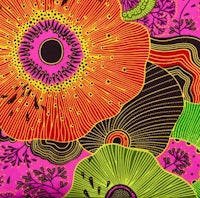
ADULTING 101:
Celebrating Black History Month
BY: T. L. Elliott
There is much to celebrate!
When I think about Black History, it is a topic that brings up a lot of emotions such as pride, joy, love, but also sadness and frustration.
At this moment in time, there is much to celebrate, because in recent years we have made impeccable strides, such as seeing our first African American in President Barack Obama and now our first African American and female Vice President in Kamala Harris. These momentous events present evidence that we are breaking through barriers and forging ahead with excellence and poise.
There is much to deliberate!
But, as I have recently watched traumatic video footage of police in Rochester N.Y. mace a hand-cuffed nine year old African American girl, I am reminded that we still have a very long way to go.
For along with these great and magnanimous strides, as a people we still continue to experience similar birth pangs from our country’s deep dark past, as though nothing has changed. They are like unwavering echoes that haunt us in this very present paradigm. We relive this recondite frustration, hurt and outrage through the incessant miscarriage of justice our people face again and again. It was evident through the inhumane and excessively violent treatment of those like George Floyd, Ahmaud Arbery and many others too countless to name.
They are our Black History, too.
So while we celebrate our victories, we must also remember our losses.
We are a people who continue to fight for every step we take, and for every door we open. We must persevere towards greatness and excel as a people. This is why celebrating Black History Month is so imperative! It’s about uplifting, edifying, educating and exhorting one another and our peers. It's about showing up and showing out because we need to announce to the world that we are here and we are not going anywhere.
We have, we are, and we will continue to be great contributors to the world through all that we are and all that we have to offer.
This is an amazing time, don’t sleep on it!
The Celebration of Black History should not be a mere after-thought, we should be anticipating the month of February, with great joy and exuberance. It should be a time of jubilee as well as time of solemn reflection. It should be heralded as a gathering of family and friends in true harmonious fellowship.
Legacy
Within the annals of Western education and abroad, there was scarcely a mention of the contributions of African American (Black) people nor of our other descendents of the African Diaspora. No mention of our contributions to math, science, medicine, nor the arts.
We had to fight for inclusion as we still do to this day!
We have influenced various cultures through our creativity, knowledge, wisdom, intellect and our unique and innovative style. But for years, our impact in America and the world has often been intentionally hidden, ignored and even stolen from us.
Had you heard about the first African American NASA scientist and mathematician Katherine Johnson and the other African American women who helped to launch the first American crewed space flights through their mathematical skill and aptitude before you saw the movie “Hidden Figures?”
Many of us had never heard of the Moors who ruled Spain for 800 years and actually had the first paved streets with raised sidewalks. Their streets were also lit with lanterns for 10 miles. In doing so, they were hundreds of years ahead of other cultures.
Their brilliance and elegance was renowned and once again hidden from us.
Throughout history, black men and women have excelled and accomplished great things as scholars, inventors, scientists, and doctors. We also excelled in the arts. Sadly, the credit for their amazing acts were often given to others, simply because of the color of their skin. They were intentionally marginalized, overlooked and sometimes never mentioned at all. But thankfully, Carter G. Woodson saw the need for change and did something about it.
The observance of Negro History Week as the second week of February was introduced by Carter G. Woodson and the Association for the Study of Negro Life and History in 1926. The movement received a widespread and vigorous acceptance and flourished for many years. It was 50 years later in 1976, that President Gerald Ford instituted the national observance of February as Black History Month.
“If a race has no history, it has no worthwhile tradition, it becomes a negligible factor in the thought of the world, and it stands in danger of being exterminated,” - Carter G. Woodson
It’s not just a right, it’s a responsibility.
Celebrating February as Black History month is not an option, it is an obligation.
Quite frankly, we should consider it our duty.
If we don’t know where we come from, how can we fully identify or appreciate where we are going? We must continue to acknowledge those who have come before us. Their sacrifices have paved the way, and we must prepare to pass the torch on to following generations.
How can you commemorate the occasion?
I’d love it if we went all out and decorated our houses in lights and holiday decor specifically for Black History month, like they do for other holidays.
Wouldn't it be fantastic if we could all be like an episode of “The Cosby Show” or “Blackish” and have our children memorize recitations about amazing Africans, African Americans and those part of the African Diaspora? How entertaining would it be for them to re-enact our greatest moments from the past and present? How truly impactful would it be to have our elders share verbal accounts from their own experiences or share our history through oral tradition as our people once did, as we gathered around to listen?
Our history is a beautiful, rich and vibrant tapestry.
Thankfully, before COVID there were large city wide gatherings and festivals where some of these things and so much more took place. But in case you are at a loss for things to do, here’s a few suggestions, many even COVID can’t hinder.
Visit the Philadelphia African American Museum.
Check out the Black Wax Museum in Baltimore.
Consider Urban Intellectuals Black History Flashcards that are available on Amazon.
There is a plethora of African American coloring books for children and adults to utilize for fun, entertainment and education.
If your family likes puzzles, there are a variety of artistic African American themes you can work on together.
A movie night with friends and/or loved ones enjoying your favorites or classic Black films could be the way to go. Don’t forget the popcorn!
Have a traditional African or African American meal together trying some new recipes.
Decorate your home in Afrocentric decor for the month of February.
Research your family tree together and create a large diagram you can frame and display.
Consider doing a DNA test and find out what part of Africa your people originated from and research the culture of that specific area.
There’s a plethora of games such as African American Trivia, Black Bingo and other Black board games available for you to explore.
Buy Black- Support Black Businesses.
Buy artwork by local or nation wide African American artists.
Give your friends and/or children a challenge to make a two-minute video using their phone or camera. The topic can be about their Black experience, or their favorite things about their culture, or the importance of family, then share the videos in a watch party. You can do this in person or via social media.
Start a tradition of having a yearly BH family gathering. Create new traditions, have fun with it and last but not least, educate yourself and others.
Black History Month can be celebrated by all people, no matter their race or ethnicity.
It is a time to reflect and come together as one. We must instill these values in our children so that they will know they come from greatness, from kings and queens. We must reinforce in them that there is no limit to what they can be, or achieve. We can’t allow them to be undervalued, or ignored and we must fortify them with affirmations of strength, dignity and character. Celebrate our ancestors and celebrate our heritage.
“Our Black is beautiful” in all its many shades, and we must never forget that!
References
15 facts on the Moors in Spain. (2018, July 24). Retrieved February 04, 2021, from https://blackhistorystudies.com/resources/resources/15-facts-on-the-moors-in-spain/
Zorthian, J. (2016, January 29). Black history Month: How it started and why it's in February. Retrieved February 04, 2021, from https://time.com/4197928/history-black-history-month/


Stars and stripes...and Sports Forever
By Jordyn J. Bennett
As the skies of New York City cried the ashes and debris of the World Trade Center alongside the tears of millions of Americans 10 days after the Sept. 11, 2001 attacks, we all needed something to bring us back together.
What better place than on the field of America’s favorite pastime: baseball.
On Sept. 21, 2001 the New York Mets hosted the first sporting event back in NYC, taking on the Atlanta Braves.
The color guard took the field holding the flags tall and proud as the crowd stood on their feet chanting “USA!” in honor of the fallen heroes and victims. Both the Mets and Braves clammered to their respective foullines as the NYPD Pipes and Drums emerged from the tunnel playing “America the Beautiful.”
For the past several years, we as a country have been so divided by the words of Jamie Salisbury and John Stafford Smith’s “Star-Spangled Banner,” we’ve neglected the tone and rhythms of Ray Charles that encapsulates the essence of America more than our national anthem ever could.
A disabled, minority who is known for not just his artistic ability and revolutionary change of culture, but also his drug addiction, singing about his birthland in a rendition that blends gospel and country.
If that doesn’t scream ‘Merica, then I’m not sure what does.
Bagpipes may have taken the place of Charles’ vocals that day in September, but I heard Ray’s voice loud and clear through the instruments shouting out a prayer we all needed to be reminded of: “America, sweet America, you know, God done shed his grace on thee.”
That moment was knocked out of the park by Mets’ Hall of Famer Mike Piazza. A two-run homer in the eighth inning would give the Mets a 3-2 lead, ultimately being the final score of the game.
It wasn’t a win for just New York — it was a win for the entire country. At that moment, as Piazza rounded the bases and the crowd began the patriotic chants once again, for a second, we weren’t just the United States of America — WE were US.
Sports have always been the bridge between people of all races, religions, genders, sexuality, political spectrums, military services and any of the many beautiful aspects of individuality that make us all so different, yet special. Whether it is the first time the national anthem (long before it was even donned the national anthem) was played at a baseball game in Brooklyn, N.Y. on May 15, 1862, or the first Army vs. Navy football game on Nov. 29, 1890, patriotism has always been a part of our games. Within that, we must respect and acknowledge that other aspects of America like the racial divide, gender-gap, homophobia, elitism and drugs and alcohol have been a part of it, too.
But that’s just sports; that is America.
One thing about America and its people, we fight. A lot of the time it’s each other or fights we got ourselves involved with that we should’ve just minded our damn business (the term “Karen” has defined this country long before 2020), but we fight together. And if we ever needed to show our fight, it was that day in New York, 10 days after one of the most horrific attacks in our counrty’s history.
But as beautiful as the moment was; as strong as it showed we are, we have desecrated that day and the lives we lost on 9/11 as a country, especially within sports.
Since that day, leagues have overly monetized military involvement and turned sporting events into televised propaganda. Military days, weeks and even months have their places in every major sports league with incentives: they are getting paid!
In 2019, USA Today reported NFL Commissioner Roger Gooddell wrote a letter to former Arizona Sens. Jeff Flake and the late John McCain — a military vet and prisoner of war — that the NFL would be returning $723,734 to the Department of Defense from money that the league received from “paid patriotism”: a practice that involved money being taken from the country to host events honoring those who risk their lives so that we can play football without being attacked.
I personally don’t believe we should be expected to sing a national anthem, need military days or anything that “honors” the country in non-Olympic or world tournament based sports. But hell, if we’re gonna do it, the least we can do is do it out of the kindness of our hearts and not for a dollar.
Not only have sports made our military into just another check, but in doing that, we have made a mockery of the life of the late Pat Tillman.
If you want to know what it is to be a standup American, allow a far-right, military extremist to tell you the sacrifice Tillman made for his country.
A Sports Illustrated All-Pro NFL Safety in 2000, Tillman ended his four-year career at the end of the 2001 season to enlist in the army in response to 9/11. It would be a move that would be heroized by the nation, but also would be the demise of Tillman.
On April 22, 2004, it was reported that Tillman, only 27 years old, was shot and killed during combat in Afghanistan during a redeployment.
Is that not the ideal American?
Tillman turned down millions of dollars to put his life on the line for his country. *Insert the distorted SpongeBob meme* “LeBrOn WoUlD NeVeR!”
But is that the truth?
Tillman was not killed by enemies, but by friendly fire. It was a discovery his family would not learn about for weeks following his death, and a massive attempt at a cover-up by the U.S. military. On top of all of that, it has been suspected that the three shots from 10 yards away fired into Tillman’s head by a fellow soldier were not accidental, but cold-blooded murder.
Has that been proven? No. Is there reason for speculation? For sure.
What doesn’t get told in the story of Pat Tillman by the NFL or military is his discernment for the invasion of Iraq and what the war represented, and the fact that he never gets his flowers for his rightful death.
This is not an argument of whether or not Tillman’s death was on purpose, but a realization that despite the evidence that show’s that Tillman was not only against the war but had his life taken by his fellow brother in arms, and both the NFL and military still use his life as a tool falsely. And if you don’t believe me, look at the use of Tillman in the otherwise extremely well-crafted NFL 100 Super Bowl commercial.
It’s despicable.
The icing on the cake of our debauchery of degradation of our patriotism is what we do with our players.
We expect them to stand for a national anthem and salute troops, but not have a say in what the country should be doing and looking like? We want them to be the examples for our children, but not give them proper guidance in social and political issues?
It doesn’t work that way.
They are the voices of all races — especially minorities that don’t have one in this country — as they come from all colors and creeds. They are the financial freedom and literacy that 39.7 million US citizens do not have because they once lived in the project homes and out of the backseats of their cars just like those 12.3 percent of Americans below the poverty line. They are the visions the great poet Langston Hughes wrote about in “Dream Variations” of the world that we all deserve.
They don’t deserve to say it because they’re great on the court; they don’t need to speak their minds because of all the money and power they have.
They are free to say it because before any of that, they are American.
It is something we often forget.
As leaders of the free world, we have set a precedent based off of independence and have lost that in the process of divided patriotism.
Women didn’t fight for your right to vote because you HAVE to vote. Women’s suffrage was ended so that women could have the liberty to vote if they saw fit the same way men could. Rob Williams did not arm himself in the midst of the Civil Rights era because Black people needed to have guns. He did it to show that if “Negroes with Guns” (the title of the 2004 documentary on Williams’ life directed by Sandy Dickson and Churchill Roberts) felt that they needed to protect themselves from the dangers of an oppressive, segregated society, than use your freedom and right to the second amendment and, as a friend of mind would say, “Keep that thing on you.”
Like the debates over our obligation to vote or gun-control, we have lost our purpose in remembering why we still prioritize this day 19 years later.
The 2,977 lives lost in NYC, Washington D.C. and in the rural field in Western Pennsylvania have been replaced by dollar signs. Those lost lives have and still are used as a ploy for the military.
This year can and will be different — at least for me.
The first NFL game was played last night. While those players have joined the likes of all of the other leagues in protest and solidarity for the lives of Black individuals that are still continuing to be unjustly taken, that song was still playing.
I can’t stand that song — I really can’t.
But while I feltl the pain of the “Star Spangled Banner,” I embraced the pride of being that comes from “America the Beautiful.”
I don’t hate being American, I just want to be proud to be.
This 9/11, after going through a pandemic, protests and riots and a hellacious presidency (that realistically y’all, we could get another four years of this — I’m just being real), the best thing we can do to respect and carry on the legacies of those who we lost all of those years ago is to unify and all find pride in being a part of this nation.
God bless America.
Mr. Charles, bring us home.
“He crowned thy good, in brotherhood, from sea to shining sea.”
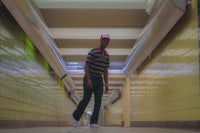
@craftyviews

contact : @intuscare
Without Love All We Have Left Is Hate
Written by: Lee Jones
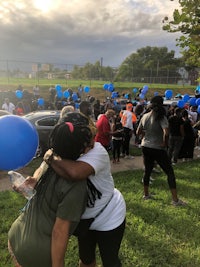
Have you ever looked in the mirror and asked yourself why do I have so much hate inside of me? I have, I think it’s because we hate ourselves or whatever situation we are in. Living in a world like this you can’t help but HATE it is out of your control. We live in a society where it’s normal to racially profile someone based on how they look. We live in a society where it’s weird to help a stranger or just be friendly towards them. I’m not going to lie; I still have a lot of hate inside my heart myself. It was the feeling of LOVE that saved me from being overwhelmed by hate. I hate that I live in a city where our motto is every man for themselves we are all struggling out here so why not help each other? I hate that we are being abused by police but more that we are killing each other. When you look at the fact that women and babies are getting killed in the crossfire, any problems we have with each other should become meaningless. What's more important than protecting our African American women and the future leaders of the world. I hate that we hate each other just because we live on different blocks. We all live in the same city and in the same communities so why fight each other. How can you hate someone that you never even met before? He might have something that you need or be able to help you get something you need. I get it. I used to hate myself too actually and I still kind of do. I have felt the genuine love of someone who truly cared about me and it saved me.
Something I always say is “support goes a long way” if we all would just love and support each other there would not be any hate left. I know the young men of my generation including myself are way too prideful to ask for help, but we do need it. We need someone to tell us that we matter or that they’re proud of us or just show interest in our life or us as individuals. It feels good to know that people care about you and expect great things from you. It motivates and pushes me to not just be a better man but a better human being as well.
We as men also have to treat our women better. It shouldn't be okay to objectify them and call them all types of inappropriate names. Women are the pillars of our community and the spines in our backs so to speak. They’re natural caregivers and have maternal instincts. They take care of us way more than we deserve and we should be grateful. We treat them like they’re a piece of meat to be passed around and like it’s expected of them to be a hoe. The change starts with us. I wouldn't even be the man I am without the women in my life. Matter of fact we wouldn’t even be alive without women think about that for a moment. We can’t keep shaming women for doing the same things that we do. It's not right. Let's all take a pledge not just to be better men but to be better human beings.

contact : @hbcuscopeapp
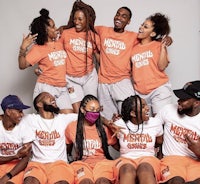
shop : @gvollc_
Adulting 101 : Adapting to Change and Transition
by : T.L Elliot
As grown ups we are expected to be able to quickly adapt to change. We should be able to smoothly navigate the waves when transition occurs. But none of us were prepared for the events of 2020 and the crash course of a life altering pandemic! Yes, there has been good, bad, indifferent and even humorous moments, all of which have impacted us in many ways.
So let’s start with the good. We have all gained an appreciation for things once thought trivial, such as going to the grocery store, to the movies, a restaurant or even hanging out at the mall on any given Sunday. Oh and let us not forget the simple luxury of purchasing toilet paper and not having to race a fellow shopper for the last six pack of Scotties or Charmin. We certainly no longer take those family gatherings for granted. We may have learned that we not only love our mates but being quarantined together for a few months taught us that we can more than tolerate them. We actually enjoy spending time with them, even when doing nothing at all. Some of us learned how to cook, while others pursued new hobbies and artistic endeavors. Some of us used the time to strategize and came up with a business plan or even started that home based business we always wanted to pursue. Then there were those of us that learned the value of writing letters and sending cards over sending a tweet, making a post or shooting a text message. Many of us experienced the value of time, friendship, caring and selflessness. We acknowledged and celebrated our heroes who wore scrubs or uniforms, taught in our classes, or lived right next door.
Adulting and dealing with change also means dealing with the struggles and hardships that come into our lives without warning or invitation. This pandemic has shown us in many ways how fragile life can truly be. The loss of loved ones, the fragility of our bodies and the undeniable loss of control when fighting off this very virile viral enemy! Our businesses, our livelihood, our schools, our existence was touched in many ways as the threat loomed overhead. For many of us, even the landscapes of our neighborhoods changed, as many small businesses and mom and pop shops struggled to survive and inevitably were forced to close their doors. Quarantining wasn't just about twiddling your thumbs out of boredom, at least not for everyone. Those for whom school, and or the job was a place of refuge from the abuse that often took place at home behind closed doors, found themselves shut in with their abusers and not all came out unscathed, or even came out at all, once the quarantine ended. We watched as our nation's leaders fought, fumbled, and faltered over how this pandemic should be handled. Then we continued to watch as they haggled over what resources were necessary, when it should be given and who was eligible to receive it. Yet in all these things we survived. We are still here!
In the end, despite our indifference, with the help of Covid -19 we learned to go along to get along. We were introduced to drive-by birthdays, where you literally drive by slowly while honking horns and touting big ole signs and balloons. Parking lots became meeting grounds for moms who cunningly escaped their homes to have grown up time parked six feet apart in a circle, while sitting in the hatch back of their vehicles chatting it up. Husbands and wives found the romance of a quiet drive, away from the kids. The UPS man became our new found friend as online shopping was at an all time high. Exercising outdoors became a guilty pleasure rather than a mere physical activity, after all, who could argue with jogging or a family bike ride! Zoom became a household name as a number one app for work, school or any other organization or group that involved online meetings. Schools and businesses learned to operate online using virtual technology. Life changed and we adapted.
Part of adulting is being able to look at the silver lining. We lost pro sports for a time, but we gained historical moments in sports with some very entertaining sports casters. We couldn’t experience live music in person but were able to watch free online concerts with some of our favorite artists. I personally loved the singing battles. We were not able to go to movie theaters, but the drive in theaters made a huge comeback and has always been one of my favorite things to do. We have to wear masks, but now they are a fashion statement or another way to represent our favorite sports team. Sure, we must practice social distancing, but we are not shut in anymore, at least not for the moment. We may have lost traditional graduations but experienced the outdoor parade of seniors and watched them receive their diplomas on the big screen. In L. A. they were quarantined and because there was no traffic, the smog finally cleared and they were able to see the blue sky, amazing! Let us not forget, some of us were out of work but received unemployment plus and extra $600 bucks each pay...Sweet!
By the way, here’s a list created by AARP of 10 things Covid -19 may have changed indefinitely.
1. Working from home
2. Seeing your doctor
3. Shopping for groceries
4. Staying in touch
5. Wearing face masks
6. Going to the movies
7. Traveling by air
8. Riding public transportation
9. Protecting your privacy
10. Washing your hands
For more info on these check out the link below.
Many may never admit it, but some of us needed that time to be at home, to be with family and perhaps we needed a moment to have the world hush, so that we could just...Be.
Adulting is persevering despite the struggles and being grateful for every gift, no matter how large or menial it may appear.
Markowitz, A. (2020, May 04). Changes to Daily Life From Coronavirus That May Last. Retrieved September 04, 2020, from https://www.aarp.org/health/healthy-living/info-2020/coronavirus-lifestyle-effects.html

shop : @alluresleep

“ Feelin Blue “ by @kcpalmz

@kcpalmz

More than a Game : Why Boycotting means more to me than a Championship
By: Jerry Humphrey III
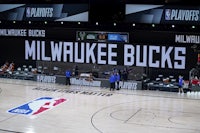
August 23.
Jacob Blake, an unarmed black man, was shot seven times in his back by a White police officer during an arrest in Kenosha, Wis.
By the grace of God, Blake survived the shooting; however, he is paralyzed from the neck down. Not to mention, his three sons witnessed the entire situation while sitting in their father's vehicle.
With our world already in shambles, this situation just lit a bigger flame in the fire that was started 400 years ago. Protesters in the state of Wisconsin and other parts of the world began to flood the streets and demand justice.
In light of this event, the Milwaukee Bucks decided to boycott their Game 5 playoff matchup against the Orlando Magic. This sparked the rest of the league to boycott their playoffs games, too. WNBA, MLB, NFL and NHL joined the protest as well.
“We’re tired of the killings and the injustice,” Bucks Veteran George Hill said. “At the end of the day, you won’t change. You want things to be more civilized and people to have humanity. And like I said, that's what means more than basketball to me and my teammates, and that's what we strive for."
Though the boycott only lasted two days, I recall those being the greatest two days in basketball history. For the top athletes in the world to use their platforms to bring awareness to world issues was huge. We haven't seen anything like this in all my time watching basketball.
NBA Hall of Famer Bill Russell took to twitter to voice his opinion on the NBA players taking a stand: I’m moved by all the @NBA players for standing up for what is right. To my man @TheJetOnTNT (Kenny Smith) I would like to say Thank you for what you did to show your support for the players. I am so proud of you. Keep getting in good trouble. @NBAonTNT @ESPNNBA @espn #NBAPlayoff.
Russell played in the NBA during the 60s so he dealt with racism game in and out. In 1961, a Lexington, Ky. restaurant wouldn’t seat Russell and his black Celtics teammates before an exhibition game. They boycotted the game to make a statement especially during a time where African-American athletes were taught to turn the other cheek when it came to racial slurs and hate.
I would’ve wanted the protest to last longer for the simple reason that it is the wrong time to play basketball. As individuals, we can’t look to these professional athletes to stop what they are doing for a living to make a change.
It’s impossible!
However, to some, having an NBA season can bring the limelight off the important issues and shift the focus from justice to sports.
Philosopher Ehsan Sehgal once said: “If you stand firm, no matter where or for what, you are the light.”
Witnessing this NBA boycott gave light to an issue that we will be battling for the rest of eternity.
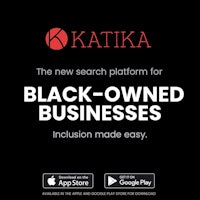

@supremebillionairesclub
School Days: Then and Now
By: Michael Humel
I was born into a world of chaos and confusion. My parents were in their late twenties, and had never heard of my birth defect. Spina Bifida is a birth defect in which a developing baby’s spinal cord fails to develop properly. While the doctors were trying to figure out what to do, I had to stay in the hospital.
When I was sixteen, I found out something from my mother that the doctor had told her when I was a baby. He brought my mother and aunt to his office and coldly told her I would probably never, walk, talk, feed myself, and I should probably be institutionalized. Looking back it makes me wonder how much of an impact this had on the way I was raised and how certain situations around me were handled.
I spent the first ten years of my life in a school for disabled children. It was an isolating experience as well as one that connected me to people who understood what I was going through. Since everyone had disabilities no accommodations had to be made until I went to a mainstream school. I started school with kids without disabilities when I was ten years old. The only accommodations I needed was a bigger desk that I could roll under, I was able to leave class five minutes before everyone else so I didn’t have to go through the crowded hallway and I was able to use the nurses bathroom because it was actually handicapped accessible. When I started school with able bodied kids I was hesitant about their reaction and how everyone would deal with it. They liked me pretty well from the start. They always wanted to push my wheelchair
on the playground. The only problem I had in those early years was one kid called me metal legs. At the time it made me feel bad. However, looking back it’s a pretty badass superhero name. The accommodations I needed never changed. The only feeling I ever had to deal with was the isolation from being different. Thankfully I did meet students I was able to get along with that made school more bearable. However, that was where it ended. My life in school consisted mostly of getting up, going to school, coming home and watching tv. The kids liked and respected me on a certain level. However, it wasn’t enough to be invited to parties outside of school or hangout with the other students outside of those walls. As High School wore on I disliked it more and more. I had my handful of friends but really I just wanted out. It wasn’t until I graduated that I saw the impact I had on my school. On graduation day they built me a ramp so I could go onstage and get my diploma. When I wheeled out onto the stage almost the entire senior class was giving me a standing ovation. I don’t remember anything except looking out onto the crowd, seeing what they were doing and being excitedly overwhelmed. It was something I didn’t expect but it was affirming to see.
`When I started attending college I enjoyed it a lot more because I didn’t have to be there. I wanted to attend classes. I joined the newspaper and found a place where I felt like I belonged. I would write anywhere between one and three articles every two weeks. The only difference in what I needed for school was accessibility. One of my classes was on the second floor of a building and it liked to break down. You could tell it was an old shoddy elevator. On more than one occasion the elevator wasn’t working and for short amounts of time I got stuck. Once when I was concerned about the fire safety plan for disabled students I was told if there was a fire while I was on the second floor I was to wait in the stairwell for someone to come get me. Obviously, this worried me and made me never want to go on that elevator ever again. Thankfully that was the only problem I had to deal with while attending college.
In nineteen seventy five the Individuals with disabilities Education act was passed. According to the IDEA website www.sites.ed.gov “The Individuals with Disabilities Education Act is a law that makes available a free appropriate education to eligible children with disabilities throughout the nation and ensures special education and related services to those children.” The LRE or Least restrictive environment mandate “requires that all students in
special education be educated with typical peers to the greatest extent possible , while still providing Free Appropriate Public Education. The LRE requirement is intended to prevent unnecessary segregation of students with disabilities. The IEP or Individual Education Program is essentially a scorecard for the progress a special education program is making with its individual students. The IEP must include such items as “A statement of the child’s present levels of educational performance.” Other requirements for an IEP are “A statement of annual goals including short term goals. “A statement of specific special education and related services to be provided to the child and the extent to which the child will participate in regular education programs.” And finally, “the projected dates for the initiation process.” Transitional Services are defined as “educational activities and supports designed to assist students with disabilities to reach measurable postsecondary goals. The determination of specific transition service needs stems from individual results of various age appropriate transition assessments.”
Student accommodations can vary greatly depending on the disability the student has. Todd Decker, a former special education student in New York and Florida, believes there is more work to be done for students with disabilities. “Teachers should be better trained to teach students with disabilities. I noticed in college both in New York and Florida those in charge of services for all students with disabilities had no absolutely no background or experience working with students with disabilities in any capacity. When someone with a disability knows more than a person in charge of disability services on a college campus that tells me something,” stated Decker. Different allowances depend on the severity of the student. Merari Vasquez, a student with Spina Bifida attended school in New York. “The only type of exceptions I was granted were to not have to change out of my school clothes or uniforms to gym uniform. In the seventh grade I was off to one part of the gymnasium with a guy who had muscular dystrophy to do table games. The gym program everyone else was doing required everyone on their feet which we couldn’t do,” said Vasquez.
Special education teacher Kristy Bradley who was born with cerebral palsy doesn’t believe her disability has changed the way in which she teaches her students. “I don’t think it’s changed how I approach students at school. It’s always been who I am. I do think it’s made me a more empathetic and understanding teacher because I have personal experience. Also my son has ADHD. He's extremely smart but can require support in maintaining focus and dealing with emotions. His scores did not indicate an academic need. Schools do not view anything other than academic needs when giving services. It’s ridiculous because if he can’t sit still and pay attention he can’t learn to his full potential. The fact that I’m a special education teacher allowed me to have the knowledge to fight for what I knew he needed. It also made me a very empathetic and understanding teacher, especially when dealing with families which was a huge part of my job working with one to five year old children with autism.
Even though strides have been made to include disabled students more work needs to be done. Constantly monitoring a student’s progress is paramount to the special education
program. Each individual student’s needs have to be assessed and individually tailored which makes the goal even harder to accomplish.
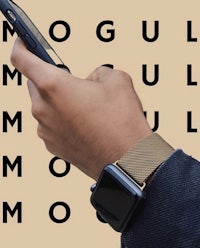
shop : @moguljewelry
Young And Gettin’ it: Benalloul creates his own path as teenage sports agent
By: Jerry Humphrey III

When you’re 16 years old, the main things on your mind are highschool, relationships and clothes. In many cases, we start our first jobs and even learn how to drive.
But that’s not the life of Zac Benalloul.
Recently I had the opportunity to talk with Benalloul, a 16-year-old sports agent who’s defied the odds and changing the sports world with his own agency: Benalloul Sports Management.
The New York native started his career at 15. After a friend pushed him to give it a try, Benalloul began to reach out to NBA G League players via Instagram. Some of his most notable clients are 2008 NBA champion Glen “Big baby” Davis, 2017 McDonalds All-American Billy Preston and former North Texas star Tony Mitchell.
“Growing up, I really enjoyed watching and studying the game of basketball,” Benalloul said. “It steered me to do what I do.”
Zac is the oldest of three. He has two younger brothers and his parents are real estate agents. In an interview with Prime Time Sports Talk, he spoke on how his parents provided no help in establishing his business because of their work.
“Only people I look up to are my parents and Pat Riley,” he said. “I don’t want to be friends with the competition because, at the end of the day, we want the same thing. My relationship with God is what drives me to keep going.”
With Benalloul being in the industry for a few months he believes his business could be a top seven agency in the sports management world.
Zac ended our interview with this piece of advice: “To every 16-year-old out there, it’s never too young to do what you love. Don’t be afraid to fail and plan out the right way.”
Tune into East Coast Magazine on instagram (@eastcoastmagazine) for a one-on-one live interview with Benalloul and ECM Sports Editor Jordyn J. Bennett on Sept. 17 at 7 p.m.
Laughing Through Life
Julie Richards-Humel
Growing up, and still to this day, I have one parent who is calm and cool through any kind of crisis and the other who will crack jokes to get through it even if it isn’t the appropriate moment. I happen to be a combination of the two but lean towards the comedy aspect when it comes to dealing with my own problems. Especially self depreciation or dealing with any kind of mental health problem. “Hey Julie, you look like crap today, let’s take a picture, make a funny face and post that on social media so everyone else can laugh at you.” Yes, this is what goes through my mind, and I have taken those goofy ass pictures from time to time.
When I was a child it was the 70’s, and 80’s. There was no body positive movement or being comfortable in your own skin. There was body shaming, bullying, toughen up, and deal with it. Not all of us were successful at that. I was a sick kid, who was awkward, wore glasses, had tutors for missing so much school, and was dealing with a darkness that I blocked out, and is just now resurfacing. During the 80’s when puberty hit there was also weight gain which added the bonus of trying to find clothes for a heavy kid and at that time in life the only plus size clothing was for older women. Now throw in no social media, cell phones, computers, netflix, dvd’s, or gaming systems. Are you jealous yet?
I had to use some sort of comedy or laughter just to get through the day. Laughing your way through life can be a double edge sword however. On one hand you can make others feel at ease, and still talk about serious subjects that might otherwise be uncomfortable. On the other hand, you may only scratch the surface of some very serious issues that need to be dealt with. Comedians have been using this sort of technique as part of their act for years. I have yet to find a comedian who does not talk about their personal life. For the observer it helps us connect to the comedian and for them I would think it helps them get through daily life.
Comedian Richard Lewis stated in a CNN interview about the History of Comedy, “I despised myself from close to getting out of the womb. I was always wrong. When you see yourself as wrong, you seek an audience to disprove that theory.”
Gabriel Iglesias AKA “Fluffy”, has also used his own life struggles to make us laugh. Many of his jokes have dealt with his weight, some about his home life, when behind the scenes he was dealing with depression and alcoholism. In 2017 he even had to cancel the last leg of his tour to seek professional help for his alcoholism and began seeing a therapist. We were lucky enough to see him last year and he was very forthcoming about his struggles while still making us laugh. He was very honest about his
relationship breaking up and how some topics would not be addressed in his act. In my opinion, that showed such class. For so many comedians, nothing is off limits.
In the early 90’s my friend and I had the opportunity to see comedian Pauly Shore, son of legendary Comedy Store club owner Mitzi Shore. At that time in my life I was dealing with some serious weight issues, and needless to say, my self esteem was NOT flying high. The easiest jokes for comedians was making fun of fat people. Especially for male comedians for some reason. Pauly was no exception. As it turned out we had tickets to do a meet and greet with him the next day at Tower Records. I was very nervous about meeting Pauly because I wasn’t sure if he was going to call me a “fattie” to my face. At that time, I didn’t know the difference between real life and being “part of the act”. Pauly couldn’t have been more kind. He was soft spoken and very gracious with his time. He learned from the best. He spoke about how kind his mother Mitzi was with many of the comedians who would come through her doors. We have seen the many changes that actor/comedian Jim Carrey has gone through due to his mental health issues. But none have touched me as much or had a bigger impact as Robin Williams.
Robin Williams struggled with depression on and off through much of his life but things began to get out of control when he was with his friend John Belushi just hours before John died from an OD. Robin’s career never wavered and it marched forward, despite his internal struggle with self doubt and mourning for his dear friend. Mitzi Shore saw inside Robin and always treated him with “kindness”, according to her son. Many of Robin’s friends did not know all of the struggles he was dealing with towards the end of his life. He kept everyone smiling despite the fact that he was forgetting his lines, his brain was failing him, and his body was getting more and more frail. Did he feel that he couldn’t bear to have the world watch him deteriorate? What was going through one of the greatest comedic minds just before he took his own life?
Over time, science has proven that laughter is the best medicine. We now have documented evidence that laughter helps with anxiety disorder, depression, sleep deprivation, self esteem, social anxiety, stress, and many more. In the Psychiatric Times an article entitled “Laughter Is The Best Medicine” it is written:
“ B eing able to laugh at traumatic events in our lives doesn’t cause us to ignore them, but prepares us to endure them through playfulness and a changed prism of perception
of life’s challenges.”
Personally, I would hope there is validity to this statement. I have often wondered if it was a way to make light of the situation or to push back the issue entirely. Watching Robin Williams throughout his career it was very easy to see the mania, the times he was on drugs, and or alcohol. Sadly, it was those times that he was at the top of his comedic game. I have always felt lost and alone when depressed. That feeling of not wanting to do anything or see anyone. When someone asks “how are you” there is that mask that we put on and say “fine” or “great how are you?”. When what we really want to scream is “I feel horrible about myself and I can’t seem to find my way out of the darkness!”
Somewhere in the middle, some of us find a lighter way of dealing with our own darkness. Sometimes laughing at ourselves or at others. We find happiness in comedy. Most comedians are happier on stage then in real life. Laughter is called the best medicine and when you are feeling low a dose of the giggles helps. We all have ways to cope with our pain. I believe laughter is good for all of humanity.
Best of Both Worlds: Rap’s Tie to Pro Sports
By Chris Samuel

Two things are highly influential in society: sports and hip-hop.
Basketball and football in particular are heavily tied to rap music. From the athlete name drops in rap lyrics, the attempted mixtapes by athletes or the fashion trends, the relationship with hip-hop and sports is one of the most defining combinations of American culture.
With all things in life, change happens. The early era of rap had a far different culture than today. The trends or what most consider popular is far different or more advanced than it used to be.
In the early 1980s, the NBA was on tape delay. Now, it is the second most popular league right behind the NFL.
Rap music was predicted to fade out quickly like disco music. Now, it is played and styled all over the world.
Hip-hop was first introduced by DJ Kool Herc during a block party in the Bronx in 1973. Various styles and subgenres have come out of it, and now it is considered by many to be the world’s most popular genre. Kool Herc created the artform dj-ing at parties and mixing sounds together that would be enjoyed by the masses, particularly black youth.
The first hit rap-record was “Rapper's Delight” by the Sugar Hill Gang in 1979, which isn't known for getting amped up at sporting events. Later, rap acts were getting more popular in the late 1980s and so was their identity in sports. Groups in the era included NWA, EPMD, Public Enemy and, world famous, Run-DMC. The time period of the late 80s to the 90s is considered the Golden Era of hip hop. That era of sports and hip-hop would collide to create a culture wave like no other.
Black athletes during that time were starting to share their favorite music publicly, which raised eyebrows throughout rural America. From 1991-1993, the University of Michigan men’s basketball starting lineup took America by storm. The “Fab Five” — as they are famously known — consisted of Jalen Rose, Juwan Howard, Chris Webber, Jimmy King and Ray Jackson. As they received more attention from the media because of their flashiness, they revealed their favorite music to be hip-hop icons like those 80s artists who began to bridge the gap.
The media and rural America were worried due to them being black and hip-hop taking over (even though white kids were listening to it as well). This trend has always been an interesting dynamic with the youth.
Over the years, athletes are quick to follow the fads of hip-hop. Jerseys from all sports leagues are worn now as fashion statements, but fashionistas can thank hip-hop for that. Since the 90s, rappers have consistently improved sales of jerseys, hats, hoodies, sweaters and anything with a team logo on it that could make them look fashionable and still rep their hoods. Even the less popular sports in Black America like hockey and soccer get represented through apparel.
Both elements also cause excitement and cause a wide range of emotions. For sporting events, the stadium or arena rocks with sound of current and classic rap songs. One classic tune for fans to get rowdy to is “Jump Around” by House of Pain, which was released in 1992. Not just hip hop that gets blasted, but sets the tone before and during games to make it an electric atmosphere.
A phrase fans of either hip hop or sports might have heard is: “Rappers want to be athletes, and athletes want to be rappers.”
Many professional athletes have delved into the music industry and attempted to pursue, not one, but two lucrative careers. One of the first athletes to make a rap album was none other than Shaquille O’Neal. O’neal released his debut album in 1993 titled “Shaq Diesel,” which would later go platinum. Other athletes that have released music include Damian Lilliard, Roy Jones Jr., Deion Sanders, Iman Shumpert and many more. The athletes display their talents in both fields just show how impactful both can be, no matter how good they are in either artform. The most notable rapper to appear in a pro sports league was Master P, who played for the Charlotte Hornets preseason in 1998 and the Toronto Raptors in the preseason in 1999.
Former NBA superstar Allen Iverson started to “dress like a rapper” when he arrived at games. Iverson’s attire would include baseball caps, jewelry and baggy clothing. All of those articles of clothing are popular in the rap community, and Iverson is considered to be the biggest influence for the way of dressing for NBA players. The trend was so popular and common, the NBA made a “dress code” in 2005 that banned chains, medallions, baggy clothing, etc.
Business in both realms can be booming if it is done right. Legendary rapper Jay-Z along with Creative Artists Agency, founded Roc Nation Sports management group in 2013. Roc Nation is also the rap label that was founded by Jay-Z. Roc Nation’s management includes athletes such as Saquan Barkley, Kevin Durant, Kyrie Irving and many more.
To promote their team , the Toronto Raptors named rapper Drake as their Global Ambassador in 2013 to promote their franchise campaign “We The North”. Since his arrival, the Raptors won their first title in franchise history in 2019.
The wave that hip-hop has caused has been nearly unmatched, and sports is the perfect partner. For 30-plus years, they have been tied with giving the world plenty of cultural shifts and trends. To many, rap will never die and it won’t be too many athletes that will not at least “attempt” to hop in the studio. For right now and in the near future, the two will continue to be a perfect pair.
Dell-P is “The People’s Emcee”
By: Shacquane’ Byrd
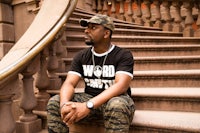
May I introduce to some and reintroduce to others Hip Hop’s own Dell-P from West Philadelphia. You’ve seen him featured on the cover with his crew behind him. I am sure you are wondering who Dell-P is and what makes him “The People’s Emcee”? I am glad you asked. Let us jump back to summer 2017 back when we had no Covid-19 and studios where open. I was co-host of Mix n Blend radio show in Philadelphia. I was nervous because Dell-P was our guest on the show. I was a new at hosting and I did my research on him I was impressed by his rapping skills. Watching him on YouTube he would massacre the microphone. He commands the room sucking the air out of it with his lyrical rhyming; often leaving the people listening speechless processing all his words moments later. He had presence of power that you could feel through your computer screen. When I was introduced to him he smiled big and shook my hand. Immediately from that energy transfer I was put at ease. He was friendly, answered all our questions and even freestyled for us once again leaving us speechless. His vibe was humble and happy. He seemed content in himself and what he stood for. After the interview he then invited Mix n Blend team to come to a showcase that he was performing at. At the heart of who Dell-P is, he is someone who cares for the people. Not just in his music but in real life he is good person.
Fast Forward to 2020, the year where either the best came out of you or the worst came out. I was at a Juneteenth festival in Philadelphia celebrating freedom with friends. The festival had different artist preforming but Dell-P voice is unique. As soon as I heard his fist line I told my friends “that’s Dell-P on stage” I left my group and went to the front row. He was rapping his hit single “Good Jawn” of his 6th studio album titled Make Emceeing Great Again. A spin off to 45s slogan, but so true as the state of Hip Hop is more about fashion and beats rather than true lyricism. One of Dell-P’s other titles is “Word Smith”. He is a professional lyricist. Just like in 2017, the whole festival seemed to under Dell-P’s lyrical spell in 2020. I on the other hand was rocking heavy shouting “comfortable being you…that’s a good jawn” to the point me and Dell made eye contact, he smiled through his words. By the end of his performance the crowed was cheering and clapping and saying “that’s a good jawn” without him requesting it. Dell-P music is different than current hip hop. He has an old school flow with current content. He makes you think and he teaches you through his music. His music is most times clean, without curses and empowering to the people. That is why he was chosen to headline the Juneteenth festival he had a message for the people. The crowd heard him and learned they had to be comfortable being themselves. Sine 1970s we as African Americans have tried to integrate in society but his song “Good Jawn” makes us be comfortable and proud to be us. It was a perfect hit for Juneteenth.
Dell-P is the underground jewel in Philadelphia. Any Hip Hop concert or underground cypher in the city you are guaranteed to see Dell-P there. He is there supporting other artist or he is performing. Anyone who is into Hip Hop in Philadelphia knows who Dell-P is. In 2017 Dell-P was awarded Philly Hip Hop Awards Album of the Year, PHL Live Hip Hop Artist of the Year and he was the Black Gala Award Winner. In 2018 he was two time Spiral Award Winner for Album of the Year and Artist of the Year. 2020 has brought the best out of Dell-P. He was signed to Ruff Nation Records in January. In February, Dell-P was personally recommended by the legendary Black Thought from the group the ROOTS to participate in The School Of Thought Workshop/Showcase. This was the 1st ever Hip Hop Master Class to be held at the prestigious Carnegie Hall. In 2020 his 6th album has gone viral in the Hip Hop world. Chuck D from legendary group Public Enemy shouted him out recently on Twitter; he called Dell-P “a great MC”. His music video for his song “Follow The Signs” has been in rotation on MTV and BET Jams all summer. He has been featured on Australian singer Niramsin’s song “How You Like” it was shown on BET Jams and MTV Spankin’ New. The international song went viral and on Tik Tok and became a trending dance challenge. That is 2 music videos trending right NOW on BET and MTV. Dell-P’s sound is authentically Philly it has allowed him to open up for major artists such as Wyclef Jean, Rakim, Jay Electronica, Roxanne Shante, DMX, Slum Village, Kelly Price, Fabolous and Philly’s own State Property. He is much respected in the industry and Dell-P is someone who will become one of your favorite rappers in the years to come, mark my words!
As you scroll through this issue you will see Dell-P in our hometown. We were able to capture him and the beautiful city of Philadelphia. I was also able to ask Dell a few personal questions. I wanted our readers at East Coast Magazine to get an insight on who Dell P is off the microphone.
Q. When & where were you born?
A. I was born August 21. I was raised in West Philadelphia
Q. What high school did you attend?
A. I attended Overbook High School (Class Of 2000)
Q. Are you close with your family? Who do you admire most in your family?
A. Yes I'm very tight with my family. My mother is who I admired the most growing up. She's no longer here with us, but her spirit lives on.
Q. What's your definition of happiness?
A. Love, success, family, self-preservation, and accomplishing your lifelong dream.
Q. What accomplishments are you most proud of?
A. Having my video for “Follow The Signs” added to rotation on BET & MTV Jams.
Q. How do you want people to remember you?
A. I want people remember me as a down to earth person who never gave up and always stayed the course.
Q. What inspired you to start rapping?
A. Watching Krush Groove was the beginning of my journey. I wanted to be like Run DMC.
Q. Where do you see yourself in 5 years?
A. I see myself being a household name and performing all across the globe.
Q. What other businesses do you have?
A. I have a clothing line called Wordsmith and I also throw a monthly Concert Series highlighting up and coming Philly talent called "The Wordsmith Experience"
Q. Any quotes or advice to share?
A. Don't rush your progress, trust the process, and always remain solid.
What always stands out to me about Dell-P is his good character. He is himself 100% of the time. He stands for the empowerment of African Americans. He represents Philadelphia well. He is an activist. He speaks to our third eye forcing us to think. Often we become numb with the trauma of reality but Dell-P rhythms wake you up. In a freestyle Dell-P said “Call me Cassius, in every verse I give em classics”. It is a true statement. His voice puts you under his lyrical spell and it will not let you go until he is done spitting. By time his done rapping his first song you are looking to buy the album. That is what makes him unique to the rap industry. His flow and content is a breath of fresh air.
In the words of legendary rapper B.I.G. “if you don’t know, now you know”. Dell-P music is what you want to bump in your car. He is a down to earth lyrical genius. He is a man respected by his peers and his fan base. He is a family man who loves giving back to his community. Dell-P is talented yet humble. In his own words “I want everyone to win” We can learn and grow from his music. That is definition of a true artist. He is the “People’s Emcee”, “Word Smith” and the “King Peez” from West Philadelphia. It is only a matter of time before the world knows who Dell-P is. Like we say at East Coast Magazine, step back and “Witness the Wave” of People’s Emcee.




